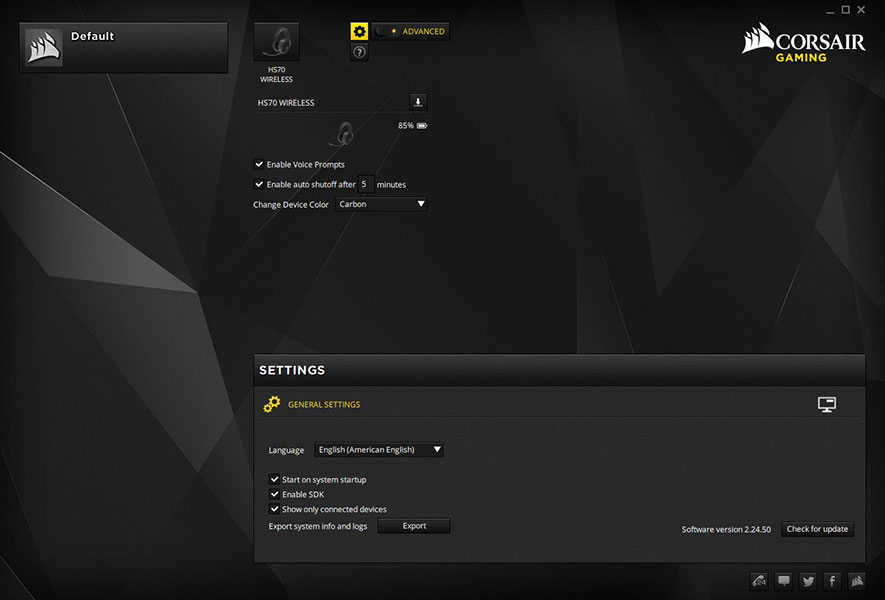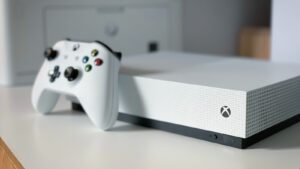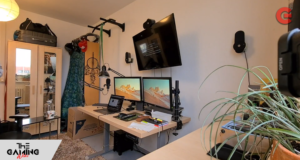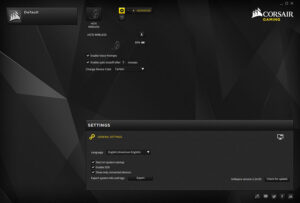
An equalizer (EQ) is a tool used to adjust frequency levels within audio sources such as music or games. EQs can help improve sound quality by either amplifying or dampening specific frequencies. They’re especially helpful in gaming environments like online multiplayer gaming.
Your EQ settings depend on both personal preference and genre; for instance, acoustic music often features high-mids and low-mids while rock music emphasizes lower mid-range frequencies.
Boosting the Mid-Range Frequencies
Mid-range frequencies in music or game audio can have a tremendous effect on its overall sound quality. By increasing these frequencies, tracks may sound more balanced and full, especially vocals and guitar. Furthermore, increasing mid-range can bring out bass and treble tones in the mix; just make sure not to boost too much as this could overpower other frequencies resulting in an unpleasant muffled tone.
To avoid this issue, begin with a more flat EQ and gradually increase its frequencies as necessary. You may also use it to reduce or remove high-frequency noise such as chopping, popping, hissing or any other unwanted sounds from music.
An equalizer can make a significant difference to both gaming and music enjoyment. Since we only hear frequencies between 20Hz to 20kHz, an equalizer lets you tailor sound output according to personal preferences. Many EQ apps/software even come preloaded with presets tailored for specific genres to help get things rolling quickly.
As you adjust an equalizer, remember that cutting can often be just as effective as boosting. Reducing certain frequencies can often produce the same sonic result as increasing another nearby frequency at reduced volumes – this makes listening carefully when making adjustments on an equalizer a key priority.
Note that it may take time for EQ settings to take effect; audio must first be processed by your system before seeing results. Therefore, it’s crucial that you experiment with multiple EQ settings in order to find those which work best for you – over time you will become adept at making subtle modifications that can really elevate the experience!
Boosting the Low-Range Frequencies
Enhancing frequencies can be an effective tool to correct issues in a recording, but must be handled carefully to achieve desired results without inducing distortion. A good rule of thumb would be to decrease frequencies that you don’t want rather than ramping up their gain.
For instance, if you want the vocals to stand out when listening to acoustic music, increase bass range (20 Hz – 60 Hz) and midbass (60 Hz – 200 Hz). This will add depth while still keeping clarity intact.
Next, consider what genre of music or game you are listening to or playing. Movies combine action with ambient noises, making boosting low-end frequencies for explosions and gun fire more immersive; conversely if playing an RPG, increasing mid-range and high-end frequencies to better hear dialogue may be more essential.
As can be seen, finding the appropriate settings for you requires some trial and error. Keep in mind that different music, games and movies all possess their own individual attributes that may or may not work for everyone – what works for one may not necessarily apply to others.
While presets can be useful, for best results it’s always best to manually adjust your EQ sliders for results that meet your exact requirements and preferences. That way you’re certain your settings meet them perfectly.
Equalizers can drastically enhance your listening experience by focusing on sounds that truly matter. From listening to music, movies, and gaming EQ can help make the most out of any audio setup – but be wary not to overdo it; too many frequencies boosted at once can create distortion in the quality of the audio stream and ruin its integrity. With careful adjustments you can find an ideal setting tailored specifically to you needs and experience an amazing listening experience – why not give it a try today and see the difference it makes? Have fun and happy listening!
Boosting the High-Range Frequencies
Equalizer high frequencies are essential in creating the rich, clear sound essential to any audio mix. They account for crisp guitar strings or cymbal strikes as well as clear vocals in songs. Gaming often overlooks these frequencies but they can make a noticeable difference to sound quality of any game experience.
Increasing frequencies in an equalizer (EQ) can greatly enhance the sound of any musical instrument or gaming soundtrack, but you must maintain a delicate balance between adding and cutting frequencies; overdoing either one could result in muddy, distorted audio; while cutting too many frequencies may dull and muffle the tone altogether.
As a general guideline, adding more bass and midrange frequencies than treble and high-frequency sounds will generally result in the desired sound effects and experiences for music or gaming. But each individual is different, so experimenting with your EQ settings to find your ideal balance will likely yield desired results.
If you like electronic dance music, for instance, increasing frequencies from 20 Hz to 100 Hz may help your experience. These frequencies play an integral part in producing the beats and basslines characteristic of this genre of music, so it’s essential that they match.
Rock music often uses both high-mid and low-mid frequencies, so experimenting with them may help you find the perfect blend for your rock songs.
As an example, adding a treble boost will bring out the vocals in your favorite rock songs, while cutting low mid will reduce bass levels associated with this genre of music.
Gaming requires hearing footsteps more clearly for optimal situational awareness in first-person shooters, and can improve the ability to respond quickly to gunfire and explosions. On the other hand, for story-based games with lower frequencies being increased can emphasize ambient sounds more effectively.
Boosting the Bass
Bass boost is a commonly requested modification to music and gaming sounds. Gamers may find their headphones lack adequate bass to fully immerse themselves into virtual worlds, making this one of the easiest modifications you can make with an equalizer app. Simply raise the slider bar on the far left until it reaches an ideal level, then gradually lower and adjust other sliders until they all tapper off at about midpoint; to ensure an ideal frequency curve without exaggeration.
However, it is important to be mindful that too much boosting of frequencies may have negative repercussions. Too much bass boost can cause muffled and distorted sounds due to bass’ low frequency making it easy for human ears to perceive it as distortion. To avoid this happening, only increase bass as much as necessary in order to hear beats and percussion clearly.
Equalizers can do much more than enhance bass. By cutting out distracting background noise and honing in on specific instruments or vocals that you want to hear clearly without straining your ears, equalizer settings can also be adjusted to enhance them further.
Use an equalizer (EQ) to alter the balance of bass and treble frequencies in your music, for instance to boost or diminish certain elements such as treble frequency. For instance, increasing it might make the music fuller and crispier while simultaneously decreasing it for a mellower sound.
Finding the appropriate EQ settings for your music depends on both personal preference and genre of music you listen to. While presets offer good starting points for different musical styles, experimentation should always be undertaken until you find settings that suit you best.




